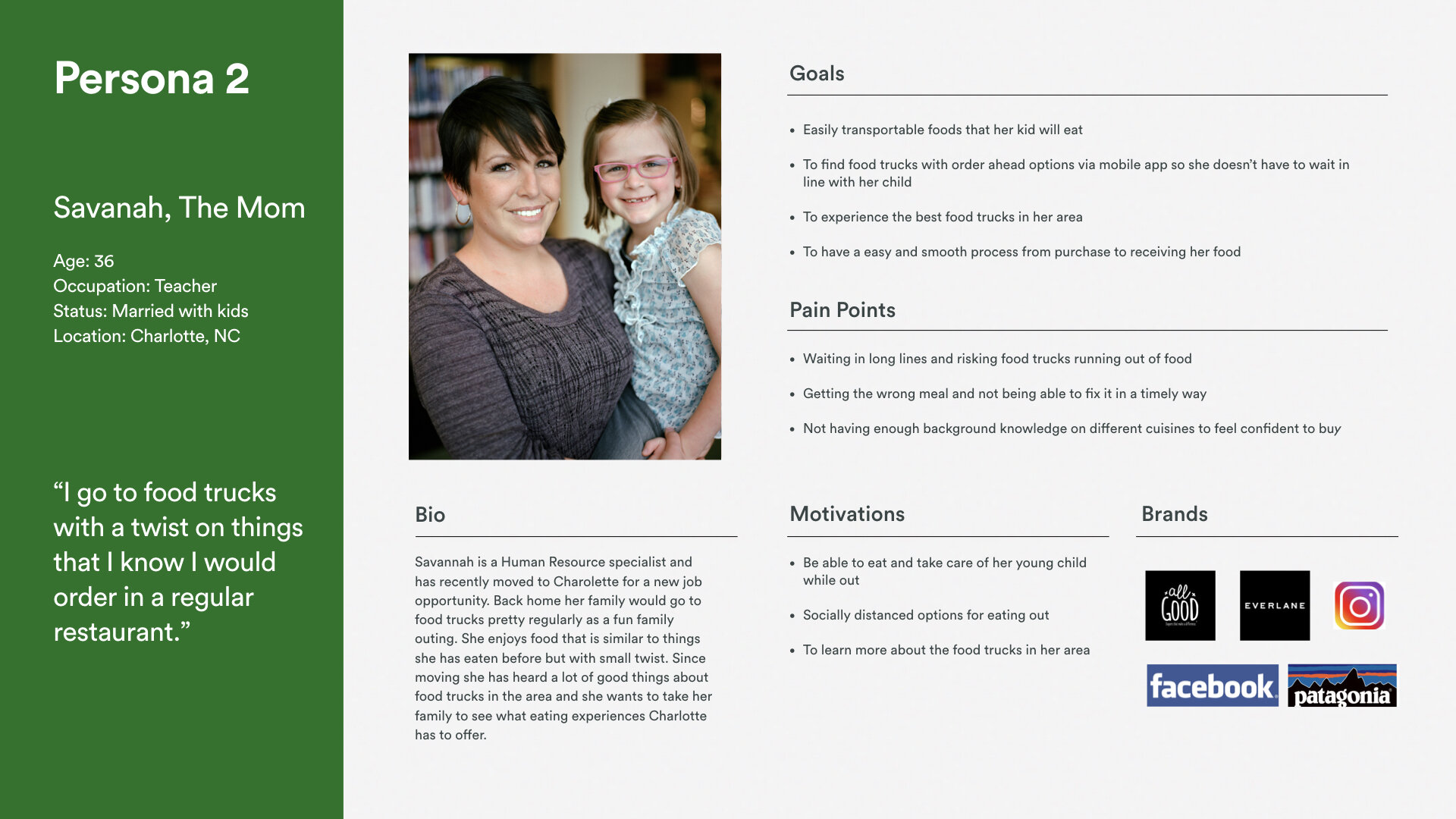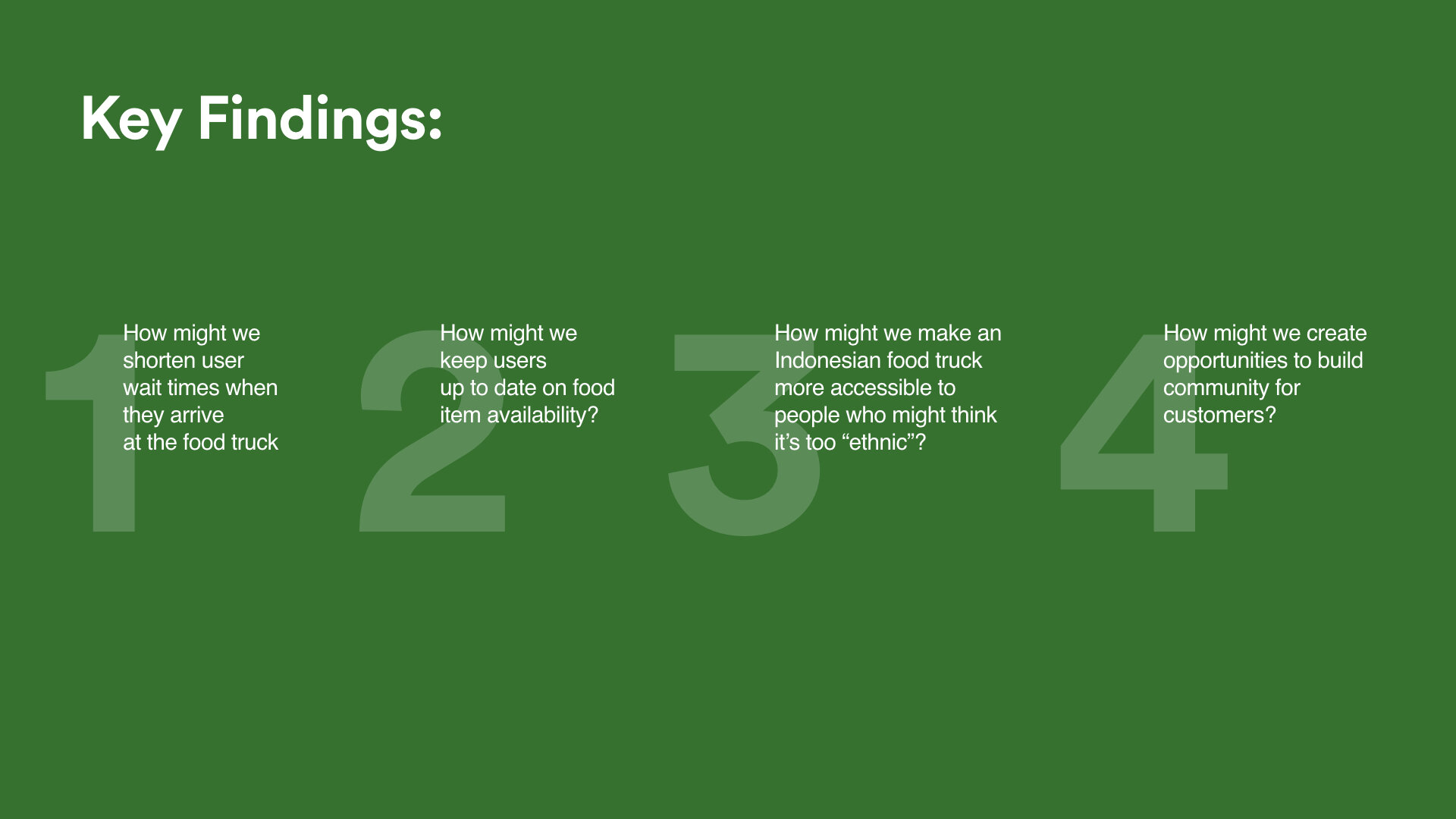DESIGN brief
—
The Opportunity
Our clients’ story begins with their immigration from Indonesia in 2001. They worked in the restaurant business until 2008 when the economic crisis forced many restaurants into bankruptcy. They worked random jobs in and out of the food industry, but their heart has always believed in food as a common denominator for all humans no matter who they are or where they came from.
They recently identified an opportunity to reignite their passion for the restaurant business by bringing their home-cooked Indonesian cuisine to the food truck scene. Demand is driven by reduced interest in large food chains and an increased desire for healthier, unique options.
While they don’t currently have enough profits to donate to charities, local causes in the community are very important to them. They noted getting inspiration from José Andres’ philanthropic model based on the impact he has made on the local D.C. community.
To succeed in the food truck space, we will launch Bali Kitchen - a fresh brand experience that will showcase their cuisine, catering offerings and truck locations across social media and a mobile application. We’ve identified the following goals:
“01.
Foster community through food”
“02.
Business Expansion”
“03.
Create Local Impact”
the challengE
—
How might we bring fresh, delicious and nutritious options to food deserts and support food and hunger issues in the process?
RESEARCH + Synthesis
—
Methodology
What we know about our users and the marketplace are a result of qualitative and quantitative research gathered using Ethnography(Proxy), Competitive Analysis, User Interviews, Personas and Journey Mapping.
Ethnographic Research
Food Truck Business Owners
Competitive Landscape
Key Takeaways
User Research
Food Truck Patrons
ideate
—
Storyboarding and Wire flows
Two user scenarios were defined after synthesizing the research data: Pick-up and Delivery. The storyboarding process helped to define the DNA of the flows. This generated key features for the app focused on the clients’ business goals. Annotated wire flows created a visual framework for how the interactions are deployed within the application.
detailed design
—
Bringing it all to life
The prototype focused on key feature sets aligned with user needs to select time slots in order to solve for long lines during pick-up, food customization and comparison for cultural familiarity, and an optional donation feature to contribute to local food and hunger impact. Testing conducted via heuristic evaluation.
Customization, Compare and Pickup Feature
Donation Feature















